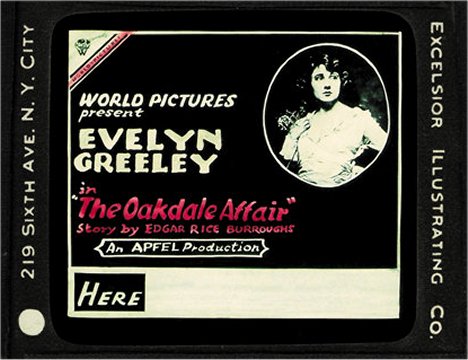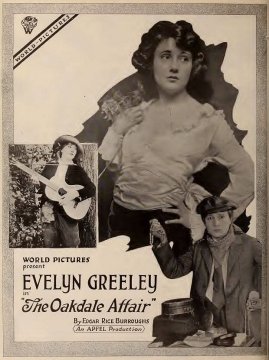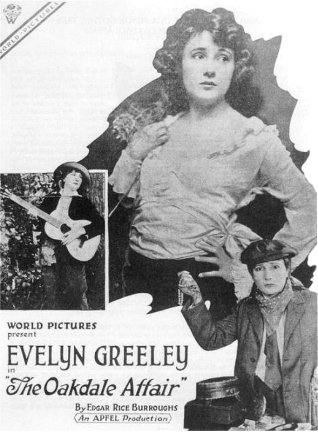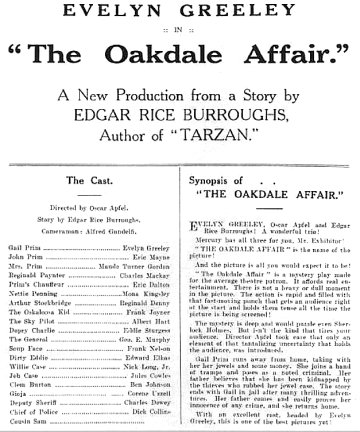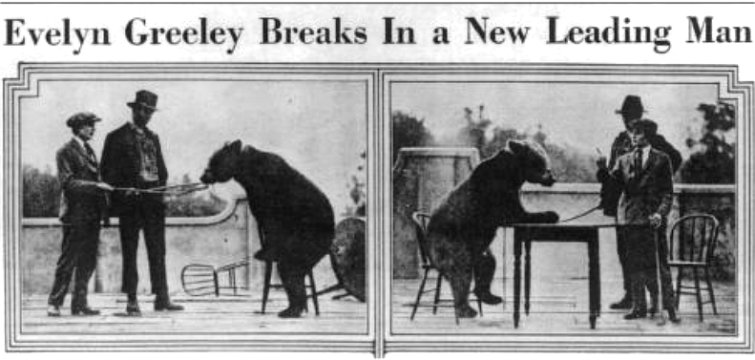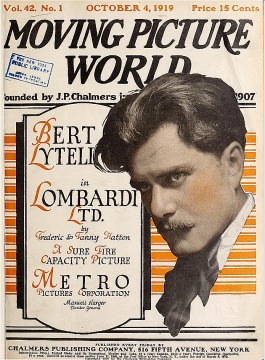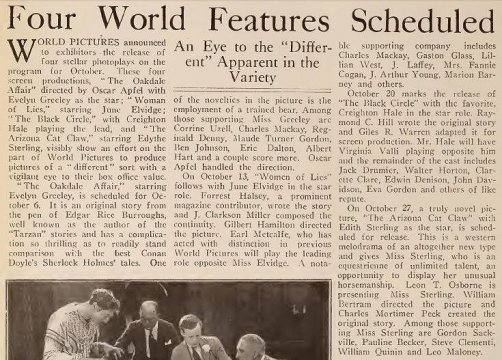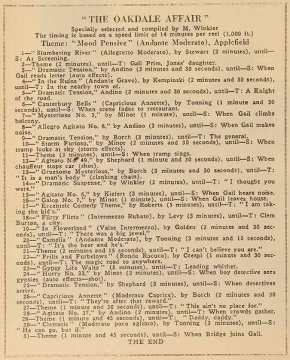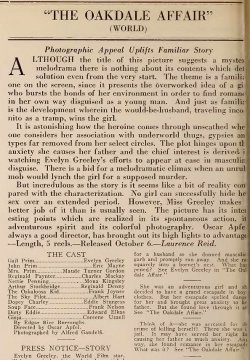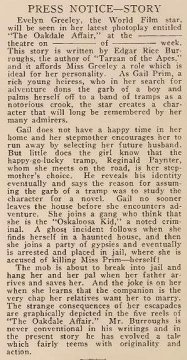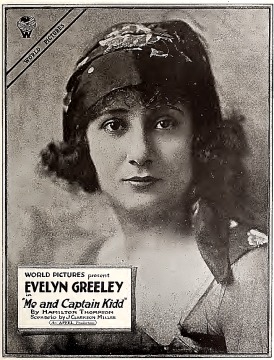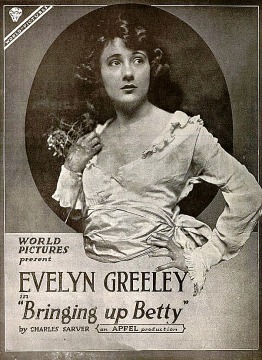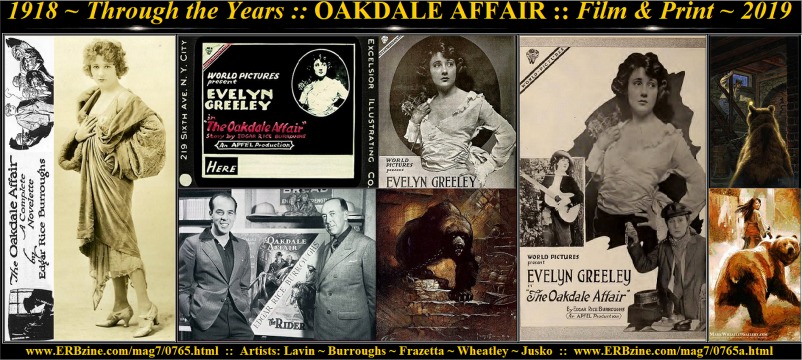Evelyn Greeley
From the Brian Bohnett Collection
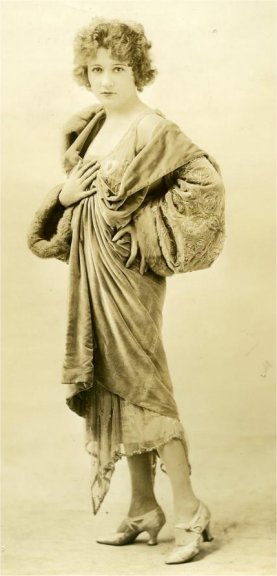
A performing bear, name unknown, registers remarkably
well in this production. Bruin's stunts, whether engaged in treeing a crook
or innocently enacting the role of ghost, are amusing and provide the only
bright spots in a picture which offers a wearisome number of melodramatic
absurdities.
To state that the story isn't convincing puts the case
altogether too mildly. We are asked to believe that a supposedly refined
girl, reared in luxury, would leave her home in a temper, disguised as
a boy, mix fearlessly with tramps, spend the night in their company without
a qualm of fear, and later enjoy the company of another of the hobo genus
without the latter ever suspecting her real sex, until he sees a picture
of her posted in the police station.
All of which is sufficiently ridiculous but quite in keeping
with the maniacal foolishness of the remainder of the plot. There is the
murder of Reginald Paynter, for instance, who vanishes immediately after
being perforated with a bullet and is seen no more. This gent starts out
apparently with the object of seducing his girl companion.
Nobody knows whether he accomplishes his purpose, and
nobody is likely to care much, nor is anybody brought to book for his assassination
, as the genuine Oskaloosa Kid also performs a vanishing stunt. True, a
subtitle conveys the information that Reggie's body has been found, and
the case seemingly drops there. But after all, what's a murder or so between
film accomplices?
The hero tramp finally appears in his true colours as
an author, possibly a purveyor of wild-cat scenarios, although no information
is vouchsafed on this point. The abducted female is restored to her father,
the latter apparently satisfied with his daughter's return, regardless
of whether her reputation may have suffered during her wanderings from
the domestic rood and that ends her connection with the march of events.
Melodramatic license can be stretched to a pretty raw
limit in film land, but it isn't elastic enough to cover up the glaring
errors of this picture, which exceeds all reasonable limits in it s excursions
into the wildly improbable. Director Oscar Apfel probably did the best
he could to bring order out of chaos, but found the task a hopeless one.
The photography is of excellent quality, offering a number of beautiful
woodland views and neatly executed close-ups.
~ Exhibitor's Trade Review, October 11, 1919

